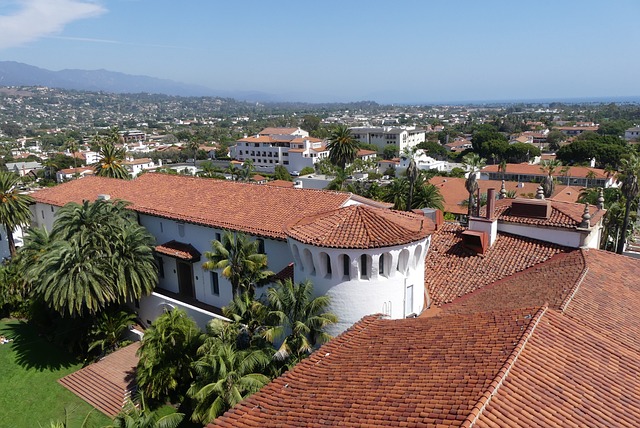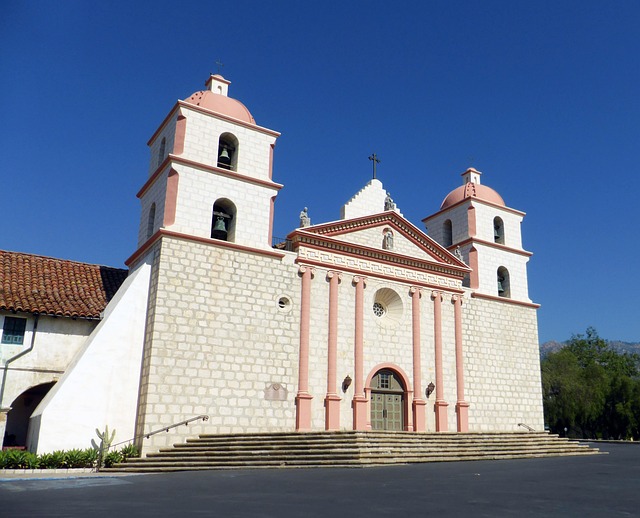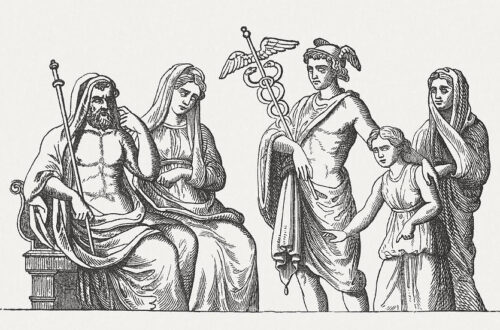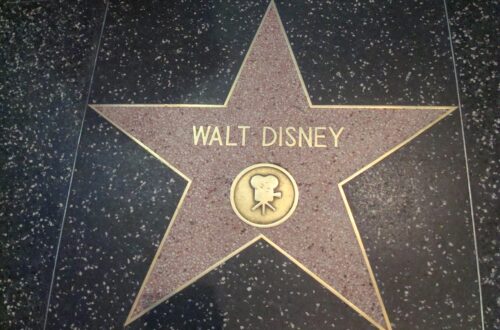
Mission Santa Barbara – The Best 30 Captivating Facts
Mission Santa Barbara
Mission Santa Barbara
Did you know Mission Santa Barbara, often referred to as the “Queen of the Missions,” holds a significant place in California’s rich history.
Nestled in the captivating Santa Barbara County, this Spanish mission stands as a testament to the enduring legacy of the California missions.
In this article, we will explore a collection of interesting facts about Mission Santa Barbara.
Delving into its architectural beauty, cultural importance, and historical significance.
Join us on a journey to uncover the intriguing secrets of this iconic landmark.
The Legacy of Spanish Missions
Mission Santa Barbara is one of the renowned Spanish missions established along the El Camino Real, a historic route connecting the 21 missions in California.
These missions played a vital role in the colonization and evangelization of Alta California during the Spanish colonial period.
Early History and Chumash Indians
Founded in 1786 by Spanish Franciscans, Mission Santa Barbara was the tenth mission established in California.
It was built on the ancestral lands of the Chumash Indians, who played a significant role in the mission’s development and became an integral part of its history.
Architectural Marvel
The mission’s impressive church, often referred to as the “Queen of the Missions,” showcases a captivating blend of Spanish Colonial and Moorish architectural styles.
The iconic twin bell towers, adobe walls, and ornate façade are a testament to the skilled craftsmanship of the early settlers.
Cultural Significance and Historical Curiosities
National Historic Landmark
Mission Santa Barbara was designated as a National Historic Landmark in 1960, recognizing its cultural and historical significance.
It stands as a cherished testament to California’s past and serves as a reminder of the region’s multicultural heritage.
Franciscan Influence
Throughout its history, Mission Santa Barbara has been under the guidance of the Franciscan Friars.
Who played a pivotal role in establishing and maintaining the Catholic faith in the region.
Their dedication to the mission’s spiritual and educational pursuits has left an indelible mark on the community.
The Legacy of Father Serra
Father Junipero Serra, a prominent figure in the mission era, played a crucial role in the establishment of Mission Santa Barbara.
His commitment to spreading the Christian faith and his instrumental contributions to the mission system has earned him a revered place in California’s history.
Architectural Marvels and Natural Surroundings

Original Buildings
Mission Santa Barbara boasts several original structures that have stood the test of time.
The church, the mission residence, and the workshops are among the original Adobe buildings.
They provide a glimpse into the mission’s early days.
Santa Ynez Mountains and the Pacific Ocean
The mission’s picturesque location at the base of the Santa Ynez Mountains.
And its proximity to the Pacific Ocean contribute to its stunning natural surroundings.
The breathtaking views add to the charm and serenity of the mission grounds.
The Moorish Fountain
One of the notable features of Mission Santa Barbara is the Moorish Fountain, a beautiful water feature adorned with intricate tile work.
This architectural gem adds a touch of elegance to the mission’s courtyard and serves as a focal point for visitors.
Cultural Traditions and Noteworthy Tales
Feast Day of Saint Barbara
Mission Santa Barbara takes its name from Saint Barbara, the patron saint of the mission.
Each year on December 4th, the mission celebrates the Feast Day of Saint Barbara.
With religious ceremonies, cultural festivities, and community gatherings.
The Lone Woman of San Nicolas Island
The story of Juana Maria, also known as the Lone Woman of San Nicolas Island, is connected to Mission Santa Barbara and adds to its intriguing history.
Juana Maria was a Native American woman from the Nicoleño tribe who lived alone on San Nicolas Island for nearly two decades.
After her discovery, she was brought to Mission Santa Barbara, where she lived briefly before tragically passing away.
Her story highlights the complex relationship between the missions and the native population.
The Sacred Garden
Mission Santa Barbara features a serene and beautifully landscaped Sacred Garden.
Filled with vibrant flowers, aromatic herbs, and peaceful fountains.
This tranquil space provides visitors with a place for reflection and a deeper connection to the mission’s spiritual heritage.
Preservation Efforts and Present-Day Significance
Restoration Work
Throughout the 20th century, Mission Santa Barbara underwent extensive restoration work to preserve its historical integrity and architectural splendor.
This dedication to conservation ensures that future generations can continue to appreciate and learn from this remarkable cultural site.
Present-Day Church

The present church at Mission Santa Barbara, built in the 19th century.
Stands as a testament to the mission’s endurance and adaptability.
Its impressive architecture and vibrant interior make it a captivating place for religious services and cultural events.
Active Parish
Mission Santa Barbara remains an active parish, serving as a place of worship and spiritual guidance for the local community.
The mission continues to hold regular Masses, weddings, and other religious ceremonies.
Maintaining its role as a cornerstone of the Catholic faith in the region.
Visitor Experiences and Cultural Exploration
Self-Guided Tours
Visitors have the opportunity to embark on self-guided tours of Mission Santa Barbara.
Allowing them to explore the grounds at their own pace.
Informational signage provides insights into the mission’s history, architecture, and cultural significance.
Docent-Led Tours
For a more in-depth experience, docent-led tours are available.
Led by knowledgeable guides who provide fascinating historical and cultural insights.
These tours offer a deeper understanding of the mission’s past and its significance within the larger context of California’s history.
Gift Shop and Mission Archives
Mission Santa Barbara’s gift shop offers a variety of unique items, including books, religious artifacts, and locally crafted souvenirs.
Additionally, the mission’s archives house a wealth of historical documents and artifacts.
Providing a valuable resource for researchers and history enthusiasts.
Historical Significance
Mission Santa Barbara holds the distinction of being the only mission in California to have continuous church services since its founding in 1786.
This continuous practice makes it a significant landmark in the history of Catholicism and mission life in the United States.
Spanish Soldiers and Native Americans
During the early years of Mission Santa Barbara, Spanish soldiers were stationed at the mission to protect the missionaries and settlers.
The mission also served as a place of refuge for Native Americans seeking shelter.
Leading to the establishment of a vibrant community of diverse native peoples.
Mission Santa Bárbara
Mission Santa Barbara is often referred to by its full name, Mission Santa Bárbara.
Paying homage to Saint Barbara, the patron saint of the mission.
Saint Barbara, known as the protector against lightning and thunder, holds a special place in the mission’s religious and cultural traditions.
Have you read my article The Best Interesting Facts About Luke (A Comprehensive Look)
Unmarked Graves and Historic Cemetery
The mission’s cemetery contains unmarked graves that serve as a poignant reminder of the many lives connected to Mission Santa Barbara throughout its history.
This historic cemetery holds the remains of early settlers, native people, and missionaries.
Who dedicated their lives to the mission’s cause.
President Abraham Lincoln and the Mexican Government
During the Mexican-American War, Mission Santa Barbara faced considerable damage as a result of conflicts between the Mexican government and the United States.
However, after the war, President Abraham Lincoln signed the Act for the Secularization of the Missions.
Leading to the transfer of mission lands to private ownership.
Adobe Churches
The construction of Mission Santa Barbara followed the traditional method of using adobe bricks.
The adobe churches, built in the 18th century, are a testament to the ingenuity and craftsmanship of the early Franciscan missionaries.
And the Native American laborers who worked on the mission buildings.
Aqueduct System and Extensive Water Treatment
Mission Santa Barbara boasts an impressive aqueduct system and an extensive water treatment system.
These innovations were crucial for providing water to sustain the mission community, irrigate crops, and support daily activities.
Mission Santa Barbara Today and its Cultural Heritage
Mission Santa Barbara Today
Did you know Mission Santa Barbara remains an active parish and an iconic cultural landmark in the city of Santa Barbara.
It continues to serve as a place of worship, community gatherings, and preservation of the region’s Spanish heritage.
Padre Junípero Serra
Padre Junípero Serra, the founder of the California mission system, played a vital role in the establishment of Mission Santa Barbara.
His leadership and dedication to spreading the Christian faith left a lasting impact on the mission and the surrounding region.
Mission Santa Inés
Mission Santa Barbara’s influence extended beyond its own walls.
It played a significant role in the founding of Mission Santa Inés, established in 1804 as the 19th mission in California.
The two missions shared a connection through their shared mission system and spiritual leadership.
Father Fermin Francisco de Lasuén
Father Fermin Francisco de Lasuén, a prominent figure in the Franciscan order, succeeded Padre Serra as the president of the California missions.
Under his leadership, Mission Santa Barbara experienced growth and development.
Further solidifying its importance within the mission system.
The Franciscan Order
Mission Santa Barbara is closely tied to the Franciscan order, a religious order within the Catholic Church.
The Franciscan priests and missionaries played a central role in the establishment and management of the missions.
Promoting the Christian faith and providing spiritual guidance to the local communities.
Mission Santa Barbara Conclusion
Mission Santa Barbara stands as a remarkable testament to the enduring legacy of the California missions and the vibrant history of the region.
From its architectural splendor and cultural significance to its ongoing role as an active parish, Mission Santa Barbara continues to captivate visitors and locals alike.
The mission’s connection to key historical figures, such as President Abraham Lincoln and Padre Junípero Serra, further adds to its significance.
As visitors explore the mission buildings, admire the adobe churches, and learn about the extensive water treatment system.
They gain a deeper appreciation for the ingenuity and dedication of the early settlers and missionaries.
Today, Mission Santa Barbara stands as a symbol of resilience.
With its rich Spanish cultural heritage intertwined with the diverse history of the Santa Barbara region.
The mission’s role as an active parish, its commitment to preserving its historical treasures.
And its influence as a cultural landmark make it an essential destination for those seeking to delve into the captivating past of California’s missions.
San Francisco to Mission Santa Barbara
Embarking on a road trip from San Francisco to Mission Santa Barbara provides an opportunity to trace the footsteps of the early settlers, explore the diverse landscapes of California, and immerse oneself in the history and cultural significance of the mission system.
From the bustling city of Los Angeles to the quaint Chumash villages and the serene beauty of San Juan Capistrano, this journey offers a tapestry of historical, natural, and cultural experiences.
Whether marveling at the palm trees swaying in the coastal breeze, admiring the craftsmanship of the church towers, or learning about the final resting place of significant individuals such as Friar José González Rubio, Mission Santa Barbara remains a cherished link to the past.
Its preservation, ongoing restoration work, and commitment to higher education through institutions like the La Huerta Historical Garden reflect the mission’s enduring impact on the community and its dedication to sharing the best of Santa Barbara’s history and culture.
Mission Santa Barbara stands as a beacon of California’s Spanish cultural heritage, a testament to the dedication of the Franciscan order, and a place of spiritual significance.
President Abraham Lincoln
From its adobe churches and extensive water treatment system to its historical connections with figures like President Abraham Lincoln, the mission offers a fascinating glimpse into the past.
As visitors explore its grounds, engage in church services, and immerse themselves in the rich history and cultural traditions, they become part of the ongoing story of Mission Santa Barbara and its role in shaping the vibrant tapestry of the Santa Barbara community.
Mission Santa Barbara stands as a captivating testament to California’s rich history and cultural heritage.
From its architectural marvels and religious significance to its stunning natural surroundings, the mission offers a glimpse into the past while remaining an active and cherished part of the present.
Now read my post about Mission San Jose
By exploring the interesting facts and stories surrounding Mission Santa Barbara, visitors can deepen their appreciation for this iconic landmark and its enduring legacy in the Santa Barbara community and beyond.





One Comment
Pingback: